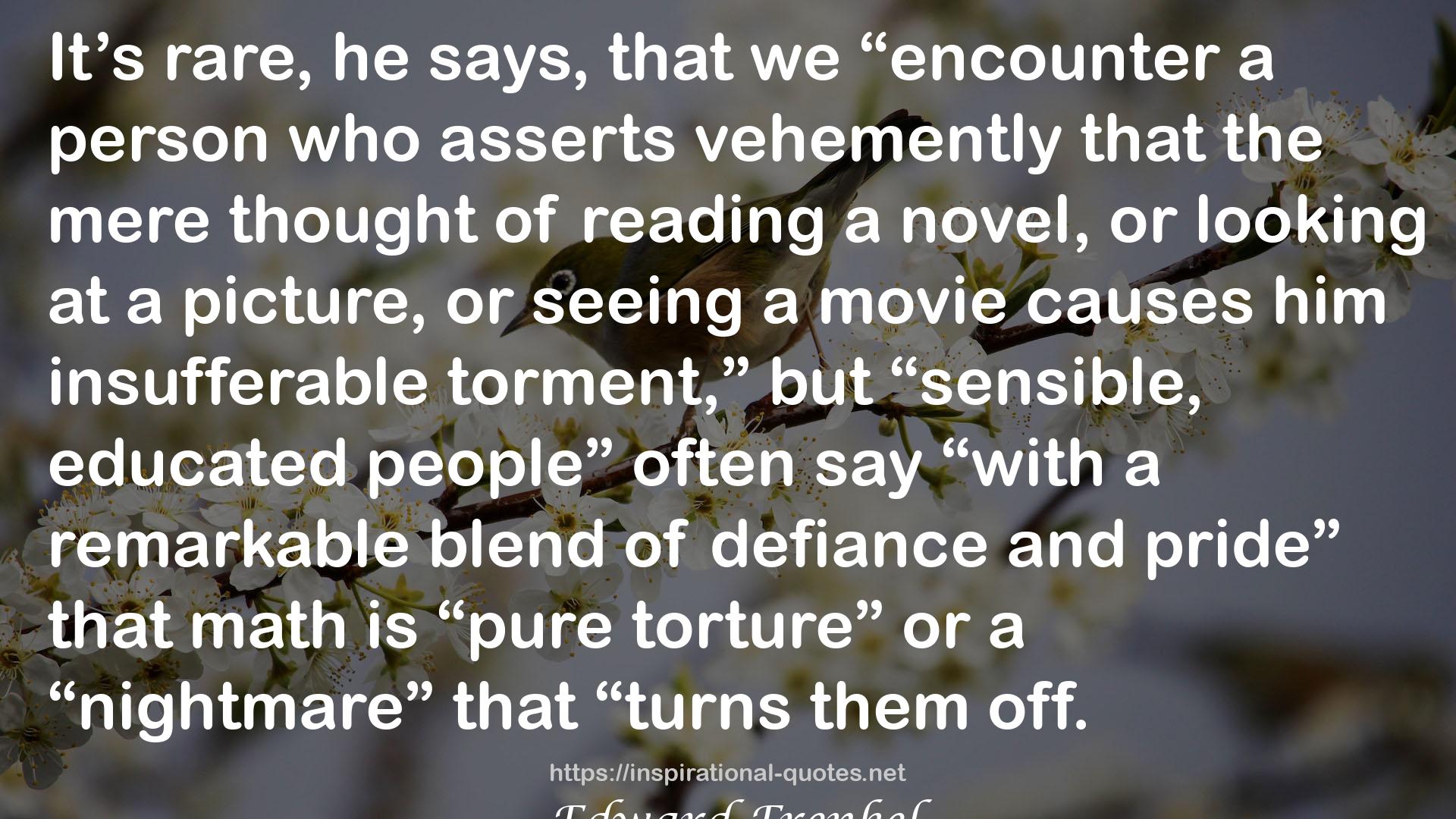27
" In 1940, during the war, André Weil was imprisoned in France for refusing to serve in the army. As the obituary published in The Economist put it,1 [Weil] had been deeply struck.... by the damage wreaked upon mathematics in France by the first world war, when “a misguided notion of equality in the face of sacrifice” led to the slaughter of the country’s young scientific elite. In the light of this, he believed he had a duty, not just to himself but also to civilization, to devote his life to mathematics. Indeed, he argued, to let himself be diverted from the subject would be a sin. When others raised the objection “but if everybody were to behave like you...”, he replied that this possibility seemed to him so implausible that he did not feel obliged to take it into account. "
― Edward Frenkel , Love and Math: The Heart of Hidden Reality
29
" Braid groups have many important practical applications. For example, they are used to construct efficient and robust public key encryption algorithms.7 Another promising direction is designing quantum computers based on creating complex braids of quantum particles known as anyons. Their trajectories weave around each other, and their overlaps are used to build “logic gates” of the quantum computer.8 There are also applications in biology. Given a braid with n threads, we can number the nails on the two plates from 1 to n from left to right. Then, connect the ends of the threads attached to the nails with the same number on the two plates. This will create what mathematicians call a “link”: a union of loops weaving around each other. In the example shown on this picture, there is only one loop. Mathematicians’ name for it is “knot.” In general, there will be several closed threads. The mathematical theory of links and knots is used in biology: for example, to study bindings of DNA and enzymes.9 We view a DNA molecule as one thread, and the enzyme molecule as another thread. It turns out that when they bind together, highly non-trivial knotting between them may occur, which may alter the DNA. The way they entangle is therefore of great importance. It turns out that the mathematical study of the resulting links sheds new light on the mechanisms of recombination of DNA. In mathematics, braids are also important because of their geometric interpretation. To explain it, consider all possible collections of n points on the plane. We will assume that the points are distinct; that is, for any two points, their positions on the plane must be different. Let’s choose one such collection; namely, n points arranged on a straight line, with the same distance between neighboring points. Think of each point as a little bug. As we turn on the music, these bugs come alive and start moving on the plane. If we view the time as the vertical direction, then the trajectory of each bug will look like a thread. If the positions of the bugs on the plane are distinct at all times – that is, if we assume that the bugs don’t collide – then these threads will never intersect. While the music is playing, they can move around each other, just like the threads of a braid. However, we demand that when we stop the music after a fixed period of time, the bugs must align on a straight line in the same way as at the beginning, but each bug is allowed to end up in a position initially occupied by another bug. Then their collective path will look like a braid with n threads. Thus, braids with n threads may be viewed as paths in the space of collections of n distinct points on the plane.10 "
― Edward Frenkel , Love and Math: The Heart of Hidden Reality
31
" When I first started coming to the seminar, Gelfand had a young physicist, Vladimir Kazakov, present a series of talks about his work on so-called matrix models. Kazakov used methods of quantum physics in a novel way to obtain deep mathematical results that mathematicians could not obtain by more conventional methods. Gelfand had always been interested in quantum physics, and this topic had traditionally played a big role at his seminar. He was particularly impressed with Kazakov’s work and was actively promoting it among mathematicians. Like many of his foresights, this proved to be golden: a few years later this work became famous and fashionable, and it led to many important advances in both physics and math. In his lectures at the seminar, Kazakov was making an admirable effort to explain his ideas to mathematicians. Gelfand was more deferential to him than usual, allowing him to speak without interruptions longer than other speakers. While these lectures were going on, a new paper arrived, by John Harer and Don Zagier, in which they gave a beautiful solution to a very difficult combinatorial problem.6 Zagier has a reputation for solving seemingly intractable problems; he is also very quick. The word was that the solution of this problem took him six months, and he was very proud of that. At the next seminar, as Kazakov was continuing his presentation, Gelfand asked him to solve the Harer–Zagier problem using his work on the matrix models. Gelfand had sensed that Kazakov’s methods could be useful for solving this kind of problem, and he was right. Kazakov was unaware of the Harer–Zagier paper, and this was the first time he heard this question. Standing at the blackboard, he thought about it for a couple of minutes and immediately wrote down the Lagrangian of a quantum field theory that would lead to the answer using his methods. Everyone in the audience was stunned. "
― Edward Frenkel , Love and Math: The Heart of Hidden Reality

